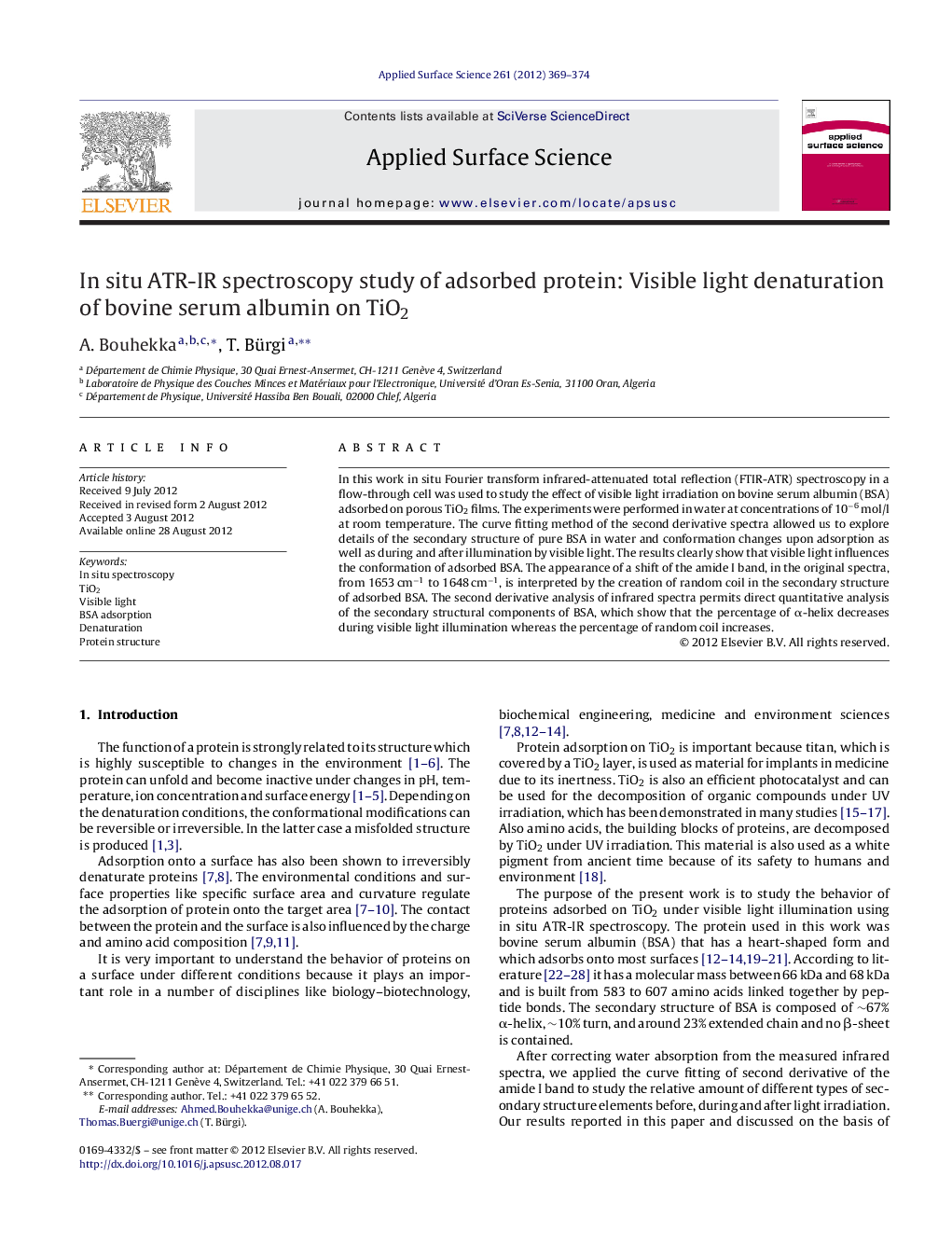| Article ID | Journal | Published Year | Pages | File Type |
|---|---|---|---|---|
| 5364552 | Applied Surface Science | 2012 | 6 Pages |
In this work in situ Fourier transform infrared-attenuated total reflection (FTIR-ATR) spectroscopy in a flow-through cell was used to study the effect of visible light irradiation on bovine serum albumin (BSA) adsorbed on porous TiO2 films. The experiments were performed in water at concentrations of 10â6 mol/l at room temperature. The curve fitting method of the second derivative spectra allowed us to explore details of the secondary structure of pure BSA in water and conformation changes upon adsorption as well as during and after illumination by visible light. The results clearly show that visible light influences the conformation of adsorbed BSA. The appearance of a shift of the amide I band, in the original spectra, from 1653 cmâ1 to 1648 cmâ1, is interpreted by the creation of random coil in the secondary structure of adsorbed BSA. The second derivative analysis of infrared spectra permits direct quantitative analysis of the secondary structural components of BSA, which show that the percentage of α-helix decreases during visible light illumination whereas the percentage of random coil increases.
⺠We study the behavior of BSA protein adsorbed on TiO2 using in situ IR spectroscopy. ⺠We examine the secondary structure changes during light exposure. ⺠Visible light illumination creates random coil in the secondary structure of BSA. ⺠The denaturation of BSA adsorbed on TiO2 under visible light irradiation is irreversible.
